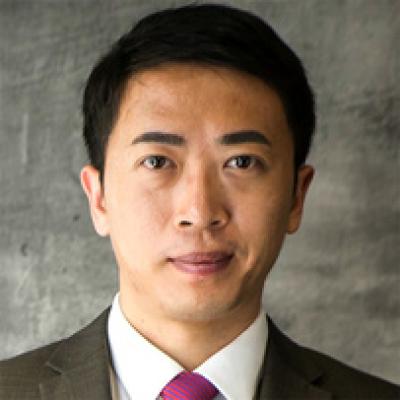Jie Xiong Honored with 2024 SIGMOBILE Test of Time Award for Influential Research on Indoor Mobile Tracking
Content

Manning College of Information and Computer Sciences (CICS) Associate Professor Jie Xiong has received a 2024 SIGMOBILE Test-of-Time award for his 2013 paper with co-author Kyle Jamieson, “ArrayTrack: A Fine-Grained Indoor Location System.” Xiong and Jamieson, now on the computer science faculty at Princeton University, published the paper at the USENIX Symposium on Networked Systems Design and Implementation in 2013, while Xiong was a doctoral student and Jamieson was faculty at University College London.
In their paper, the researchers introduced ArrayTrack, a pioneering radio frequency (RF) based approach to tracking mobile devices indoors that leveraged the burgeoning use of Wi-Fi access points outfitted with multiple antennas.

“Fast, reliable tracking of mobile devices had already been solved for most outdoor applications, thanks to the availability of GPS signals, and the fact that accuracy within a few meters is usually good enough outdoors,” explains Xiong. “At the time, tracking indoors was much more difficult—you couldn’t count on GPS signals reaching the indoor user, not to mention that a location off by a few meters could easily place you in the wrong room.”
Researchers had been exploring RF-based approaches, relying on transmitters inside a building, to solve the problem of indoor tracking. However, previous approaches suffered from challenges caused by multipath propagation—an effect caused by wireless signals bouncing off the many objects inside the typical building—which coarsened their location accuracy and made them unsuitable for indoor applications such as retail shopping, social networking, and augmented reality.
To solve this, ArrayTrack moved beyond the traditional use of wireless signal strength measurement to an approach based on phase-based signal processing, analyzing the signals from multiple antennas arranged in a known physical arrangement (known as a phased array) and introducing a novel multipath suppression algorithm that effectively identified the direct path wireless signals. Their new system demonstrated substantial improvements for RF-based localization, tracking indoor clients within a median of 23 centimeters of accuracy using six indoor Wi-Fi access points.
The SIGMOBILE Test-of-Time awards recognize papers that have had a sustained and significant impact in the SIGMOBILE community for at least a decade. The awards committee credits the paper for inspiring “a wave of subsequent research on indoor RF localization and sensing through reflections,” including Xiong’s own later work demonstrating the ability to use Wi-Fi signals to track human activities, gestures, and even vital signs such as respiration rate.
“This is an exciting time for wireless sensing,” says Xiong. “Over the past ten years, we have learned much about using wireless signals for sensing, and we have exciting new modalities on the horizon—including quantum wireless sensing, which uses the transitions of electrons to achieve ten times higher sensing granularity, and even using the leakage signals from power lines to track movements of the human body.”
Xiong currently works as an associate professor in the Manning College of Information and Computer Sciences and is a recent NSF CAREER award recipient for his work to revolutionize long-range wireless sensing. He joined CICS in January 2018 after earning his doctorate in computer science from University College London in 2015. Xiong is the recipient of a Google European Doctoral Fellowship and a British Computer Society Distinguished Dissertation Award runner-up. His research has received multiple Best Paper and Best Paper Runner-Up awards at premier conferences, including ACM MobiCom, SenSys, and CoNEXT.
